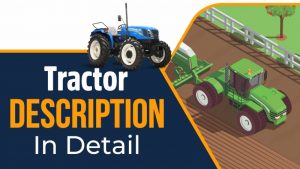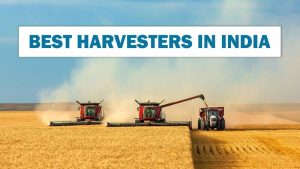Farmers use fertilizers and insecticides extensively in regions where irrigation has been possible for high output, it is known as intensive farming. Additionally, they planted high-yielding seed varieties on their land. Through the incorporation of machinery into diverse farming practices, they have mechanized agriculture.
It is also referred to as industrial agriculture and is distinguished by having a low dropout ratio and using more labor and money per unit of land area. Contrastingly, traditional agriculture uses fewer inputs per unit of land. The practice of intensive farming involves using a lot of labor and resources to increase agricultural production. The fundamental goal of this type of labor-intensive agriculture is to cultivate a limited area using human labor, which is the answer. Farmers employ fertilizers and pesticides extensively in order to grow high-quality crops with the greatest possible yield. The soil and crop quality are improved by farmers using an intensive production technique.
Intensive Farming key points:
- Intensive farming is a strategy of agricultural mechanization and intensification based on maximizing yields from available land through excessive use of pesticides and chemical fertilizers.
- Millions of cows, pigs, and chickens are raised in vast quantities as part of this intensification and mechanization of agriculture.
- A growing human population has been fed thanks to intensive agricultural techniques, which produce more food for less money per acre and animal.
- However, intensive farming poses a concern to the environment because it has contributed to ecosystem degradation, global warming, and the creation of new parasites.
- Before engaging in intensive farming on a particular piece of land, proper precautions must be followed.
How does Intensive Farming Work?
In agricultural economics, intensive agriculture refers to a system of farming that uses a lot of labor and resources in relation to the available land. The application of fertilizer, insecticides, fungicides, and herbicides to growing crops requires significant labor and financial resources. Capital is crucial for the purchase and upkeep of high-efficiency planting, cultivating, and harvesting machinery as well as irrigation equipment where it is necessary.
In comparison to extensive agriculture, which employs little labor or capital, optimal use of these resources and equipment results in much higher crop yields per unit of area. As a result, less land will be needed on an intense agriculture farm than on an extensive agricultural farm to make a similar profit. However, in reality, farm owners are frequently encouraged to work very wide expanses of land in order to keep their capital investments in machinery productively engaged that is, busy due to the enhanced economies and efficiencies of intensive agriculture.
Theoretically, intensive agriculture’s higher productivity allows farmers to employ comparatively smaller plots of land close to markets, where land values are high compared to labor and capital, as is the case in many regions of the world. Farmers may find it more economical to switch to vast agriculture if labor costs, capital expenditures for machinery and chemicals, costs of storage (if desired or needed), and transportation costs to markets are too high.
Techniques:
Aquaculture-
The production of aquatic natural products is known as aquaculture (fish, shellfish, algae, seaweed, and other aquatic organisms). Intensive aquaculture is carried out in cages in the ocean or on land utilizing tanks, ponds, or other controlled systems.
Crops-
The intensive crop farming strategy is utilized in industrialized countries to increase productivity. Industrialized crop production is used in this sophisticated form of farming. It comprises top-notch farming equipment, cutting-edge technology, and marketing expertise for high production consumption and international trade. Additionally, monoculture is a type of intensive plant agriculture.
Livestock:
Since intensive farming strives to produce as much as possible from the available area, it is also employed to supply cattle. This method uses chemical insecticides and fertilizers to grow food in enormous quantities. This contemporary farming technique is commonly used to generate eggs, meat, and other agricultural goods. Individual animals that have no choice but to survive on farms are referred to as livestock.
Benefits of Intensive Farming in India:
Good yield – High yield is a given in intensive farming. In modern marketplaces like cafes and general stores, goods including meat, milk, fish, eggs, and grains are in high demand.
High Efficiency:
By maximizing production on a limited amount of land, farmers make more profit. In comparison to the amount of food produced per unit, the requirements for space, equipment, and other inputs are smaller, making this method more effective and reasonable.
Range of Food – Mass food production in a specific food harvest or animal production is typically at the core of intensive agriculture. It leads to a wider variety of food for human consumption. A single producing region is more practical because intensive agriculture necessitates a lot of labor, money, and resources.
Impacts On Environment:
Intensive farming pollutes the atmosphere, usable water supplies, and arable land by using excessive amounts of energy, water, and industrial chemicals. Insecticides, fertilizers, and herbicides build up in surface and ground waters. Industrial agriculture practices, which are responsible for 14–28% of net greenhouse gas emissions, are one of the main causes of global warming.
Many of industrial agriculture’s unfavorable effects could manifest far from farms and fields. On a regional or national level, numerous wild plant and animal species have gone extinct, and agro-ecosystems function very differently now. The loss of natural landscape features, the expansion of farms and fields, and the increased use of insecticides and herbicides are only a few examples of the many variables that contribute to agricultural intensification. Herbicides and insecticides are becoming increasingly ineffective due to pest resistance that is being rapidly developed as a result of the widespread use of these chemicals. Agrochemicals have been linked to colony collapse disorder, in which the individual bee colonies vanish. Bees are essential to agricultural productivity because they pollinate a wide range of fruits and vegetables.
KhetiGuru provides you with all detailed information about farming methods, and other agricultural activities. To know complete details about farming install the Khetiguru application. For tractor, tractor price, tractor news, and all the latest updates install the KhetiGaadi application.




